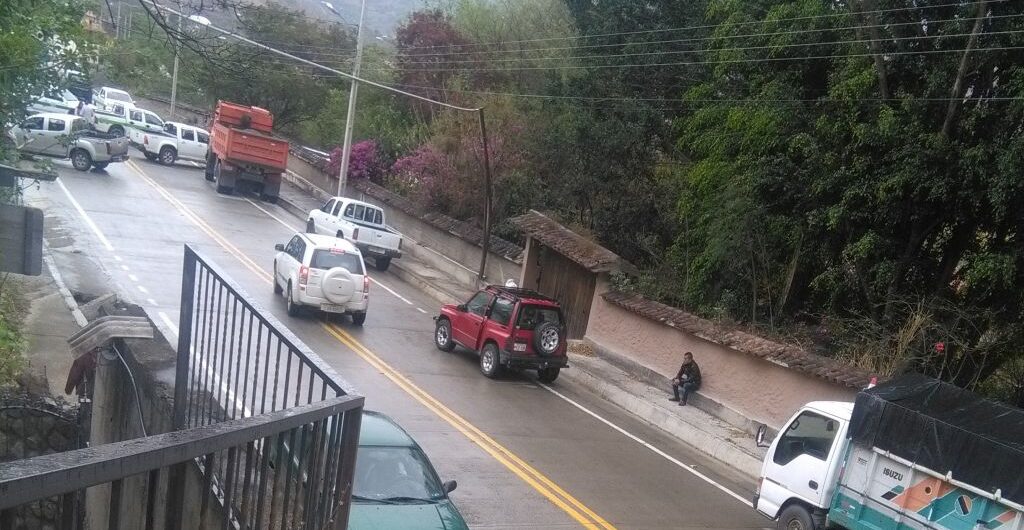What about our safety in Ecuador? Is it safe to travel around through Ecuador? How safe is it to travel by bus in Ecuador? Is it safe for me to travel in Ecuador as a solo female traveller? It are all questions we receive frequently and they don’t surprise us. If you consider that Ecuador has mainly been negatively in the news the past few years. Huge (indigenous) protest, road blocks, gang violence and recently even the killings of political figures who wanted to do something against the recent gang violence. With all this negativity it is only natural that people are currently a bit anxious to travel to Ecuador. But in general the gang violence is not aimed against the regular citizens of Ecuador, or foreigners who come to visit.
The wrong moment at the wrong place
Most of the recent violence is between gang members of rival gangs. This could affect you as a tourist in Ecuador if you’re at the wrong moment, at the wrong place. But by avoiding certain places, like the province of Esmeraldas and outskirts of Guayaquil, regular tourists in Ecuador will likely not notice anything of this gang violence. Even before the recent eruption of violence, these areas in Ecuador were not popular with foreign tourists anyway. Those who travel to Ecuador to visit its touristic highlights like the Galapagos Islands, the Amazon Rainforest, Quilotoa, Cotopaxi, Otavalo, Cuenca, Baños, etc., mainly have to be cautious about crime of opportunity. As in most tourist areas in the world.
So is Ecuador a dangerous, or a safe country?
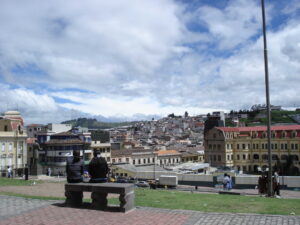
Your safety while traveling in Ecuador
Looking at the statistics, it might be safer to live in Ecuador than to live in the USA. But those of us who travel to other countries obviously put themselves more at risk then those who only commute between their home and their office. Most travellers who visit a foreign country will stand out while doing so. This makes travellers/ tourists a more likely target for opportunity pickpocketing and robbery. Therefore your best defence as a traveller is always to try to blend in.
How do I blend in?
Alright, so I’m a 6.2 feet tall blond Dutchman. How do I blend in with the Latino’s and indigenous citizens of Ecuador, who are mostly shorter than I am? I dress casually, but most importantly, I never try to look lost. Even when I go to new places I try to appear confident in knowing where I am and where I’m going. For any casual observer I might just be a foreigner who lives in Ecuador. I do take pictures, but I don’t have a huge expensive camera hanging around my neck. And I don’t have a smartphone on a selfie-stick to follow me around. Speaking at least a few words of Spanish will also help. Speaking Spanish will not only make it easier for you to navigate through Ecuador, but it will also increase your travel experience as the Ecuadorians will be more likely to accept you.
Street-wise in Ecuador
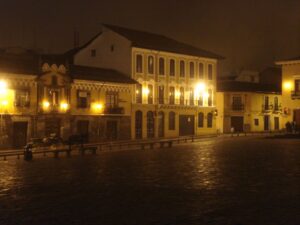
Protests and roadblocks in Ecuador
While streets that are too quiet pose a risk to robbery, streets that are overcrowded, like during festivities, pose a risk for pickpocketing. Also the Ecuadorian protests, or even roadblocks are definitely activities you would like to avoid. Most protests are against their (local) government and not against foreigners. I was in Ecuador during the big indigenous protest of 2019 and I didn’t feel unsafe. But I wasn’t in any of the big cities. Instead I spend the whole 10 days of protests in the countryside of Vilcabamba. The only problems we had was that tourists couldn’t reach, or leave the area. This is my main recommendation when protests and/ or roadblocks happen. On average they are announced in advance and only last one or two days. If possible, stay were you are and wait until they’re finished. Never get to close to protest, or roadblocks. The people are often not hostile towards us, but the mood in an emotional mass of people can quickly change, which also happened in 2019. If you really have to travel, then you can ask at the hotel were you are staying if they can recommend a reliable taxi driver, ideally with a 4×4 car. He might be able to transport you on alternative roads through the countryside from A to B.
Taxi in Ecuador
In the bigger cities of Ecuador, taxis are required to use their taximeter, have their taxi number written on the outside and have two cameras and even a panic button inside their taxi! All of this to protect their customers and sometimes maybe even the taxi driver. There are also several reliable online taxi applications available, which include Cabify and Easy Taxi. However, these apps don’t work in smaller towns and the countryside of Ecuador. Also, the taxis outside of the big cities aren’t obligated to use camera’s, a panic button, or even a taximeter. When outside of the big cities, a good way to find safe taxis in Ecuador include asking at your hotel, restaurant, or bar. But what if you are walking around in a smaller town and start to feel tired, how do you find a safe taxi? You can check if the taxi number is written on the outside, if the taxi has cameras and a panic button. But outside the big cities, these things are not obligated. So how do you know if the taxi in front of you is a safe taxi? The trick I use is to always pick my own taxi. I usually don’t get into taxi’s that pass by, slow down, or even honk to get me in their taxi. I also don’t choose taxi’s that are waiting at popular tourist hotspots. Instead I try to pick a taxi waiting at a traffic light, or a taxi that just drops off other people. I also trust my gut. If I see a taxi driver I don’t like, then I just wait for the next. There are usually enough taxi’s driving around the streets in Ecuador. Just make sure that you always first ask for the price before you get in the taxi, unless they have a taximeter.
The safety of buses in Ecuador
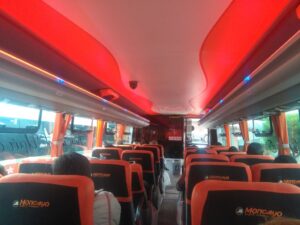
Direct transport services in Ecuador
Over the past years, more and more companies started to offer shared direct transport services from A to B. These services include a direct bus from Quito airport to the center of Quito, mini Vans from Quito to Cuenca and Cuenca to Guayaquil. These services make fewer, or no stops along the way, which make them faster and safer from pickpocketing. But, unfortunately, some drivers want to reach their destination too fast and therefore drive faster than responsible… On shorter distances, like from Loja to Vilcabamba, or Loja to Macara there are also direct shared transport services in cars, or pickups, which depart when they have 4 or 5 passengers. It is like paid carpooling. It is a safe and fast way to travel from A to B, but if you are the first of 5 passengers, then you might have to wait a bit until there are 4 more passengers.
Other safety in Ecuador tips
Other tips to improve your safety in Ecuador while traveling around include general recommendations like: NEVER leave your drink unattended. This also means that you don’t accept other people to buy drinks for you, unless you can see the drink being poured in your glass. Don’t show off your valuables; Always first go back to your hotel after taking money from an ATM, unless you tend to spend that money directly in a restaurant; Carry two wallets with you. One with all your important stuff and another wallet (preferable even with an expired banking card) for small spendings, like buying souvenirs, or buying things from street vendors. If, in the rare occasion, you do get robbed, it is always best to be able to give the robber at least something to prevent frustration and maybe even violence.
Altitude sickness while traveling in Ecuador
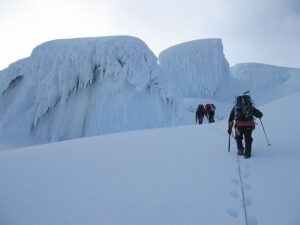
Dengue and your safety in Ecuador
Clients often ask us about the presence of Malaria, because their countries Health Department warned them about Malaria. However, some Health Departments forget to warn travellers about Dengue. The chances to get Malaria in Ecuador are very low, but at the rural coast of Ecuador there is a realistic chance to get infected by Dengue. The symptoms are similar (very high fever), but there are no vaccines and medication against Dengue. The only things you can do is to stay calm and keep your body cool and hydrated. But of course, it is even better to try to avoid to get bitten by the Dengue mosquito by protecting your skin. The Dengue mosquito doesn’t live in colder areas and/ or at altitudes above 2000 m (6562 feet) above sea level. So when traveling through the highlands of Ecuador you don’t have to worry.
